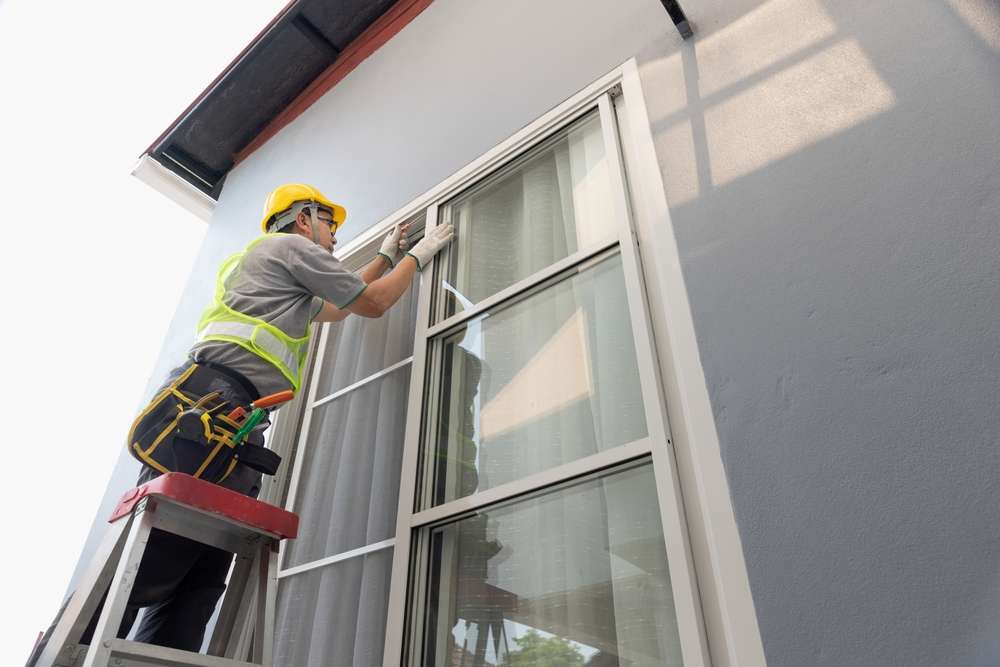A Comprehensive Guide to Roof Replacement
Replacing your roof will provide long-term benefits, protecting your home and increasing its value for years to come. Roofing companies typically handle everything from preparing to remove the old roof to cleaning up afterward. However, there are steps you can take to make the roof replacement process smoother. Small things like mowing the lawn, removing mirrors and/or protecting valuables, or even taking your children to a neighbor's house to play, can make a big difference.

Understanding When You Need Roof Replacement
Recognizing the signs that your roof needs replacement is crucial for maintaining your home’s structural integrity. Common indicators include missing or damaged shingles, water stains on ceilings, sagging roof sections, and granules accumulating in gutters. Most asphalt shingle roofs last between 20 to 25 years, while metal and tile roofs can endure much longer. Regular inspections help identify problems early, potentially saving you from more extensive damage. If your roof is approaching the end of its expected lifespan or showing multiple signs of deterioration, replacement may be more cost-effective than ongoing repairs.
Exploring Roof Replacement Materials List
Selecting the right roofing material significantly impacts both the appearance and longevity of your home. Asphalt shingles remain the most popular choice due to their affordability and ease of installation, available in three-tab and architectural styles. Metal roofing offers exceptional durability and energy efficiency, lasting 40 to 70 years with minimal maintenance. Clay and concrete tiles provide a distinctive aesthetic and excellent fire resistance, particularly popular in warmer climates. Wood shakes deliver natural beauty but require more maintenance and may face restrictions in fire-prone areas. Slate roofing represents the premium option, offering unmatched longevity of 75 to 200 years but requiring specialized installation expertise. Synthetic materials now mimic traditional options while providing enhanced durability and lower maintenance requirements. Your choice should consider climate conditions, architectural style, local building codes, and long-term maintenance preferences.
Breaking Down Roof Replacement Cost
Understanding the financial aspects of roof replacement helps homeowners budget appropriately for this major home improvement project. The total expense varies based on roof size, material selection, structural complexity, labor rates in your region, and any necessary repairs to underlying decking or structure. Removal and disposal of the existing roof add to overall costs, as do factors like roof pitch, accessibility, and the number of penetrations such as chimneys and skylights. Geographic location significantly influences pricing, with urban areas and regions with higher living costs typically commanding premium rates. Most contractors provide detailed estimates breaking down material and labor costs separately. Financing options may be available through contractors, home improvement loans, or home equity lines of credit for homeowners seeking to spread payments over time.
| Roofing Material | Average Cost per Square Foot | Typical Lifespan | Key Considerations |
|---|---|---|---|
| Asphalt Shingles | $3.50 - $5.50 | 20-25 years | Most affordable, wide variety of colors |
| Metal Roofing | $7.00 - $12.00 | 40-70 years | Energy efficient, low maintenance |
| Clay/Concrete Tiles | $10.00 - $18.00 | 50-100 years | Excellent durability, heavy weight |
| Wood Shakes | $6.50 - $11.00 | 25-30 years | Natural appearance, requires maintenance |
| Slate | $15.00 - $30.00 | 75-200 years | Premium longevity, requires specialized installation |
Prices, rates, or cost estimates mentioned in this article are based on the latest available information but may change over time. Independent research is advised before making financial decisions.
Preparing for the Roof Replacement Process
Proper preparation ensures a smooth roof replacement project with minimal disruption to your daily life. Begin by obtaining multiple estimates from licensed and insured roofing contractors in your area, verifying references and reviewing previous work. Clear your attic and remove wall decorations, as vibrations from work may cause items to fall. Protect vehicles by parking away from the house, and inform neighbors about the upcoming project as noise and debris are inevitable. Arrange alternative accommodations for pets sensitive to loud sounds. Contractors typically complete residential roof replacements within several days to a week, depending on size and complexity. Weather conditions may cause delays, so maintain flexible scheduling. Ensure clear communication with your contractor regarding start dates, daily work hours, cleanup procedures, and protocols for unexpected discoveries like damaged decking requiring additional repairs.
Selecting Qualified Roofing Professionals
Choosing the right contractor significantly impacts the quality and longevity of your new roof. Look for established companies with proper licensing, insurance coverage including workers’ compensation and liability protection, and solid reputations within your community. Request detailed written estimates outlining all costs, materials specifications, project timeline, warranty information, and payment schedules. Verify credentials through local business bureaus and online review platforms, paying attention to how contractors respond to concerns. Reputable professionals provide manufacturer certifications demonstrating expertise with specific roofing systems. Avoid contractors demanding full payment upfront or offering prices significantly below competitors, as these may indicate substandard materials or workmanship. Quality contractors stand behind their work with comprehensive warranties covering both materials and installation, typically ranging from 10 to 50 years depending on the roofing system.
Maintaining Your New Roof Investment
Proper maintenance extends your roof’s lifespan and protects your investment for decades. Schedule professional inspections annually and after severe weather events to identify and address minor issues before they escalate. Keep gutters clean and free-flowing to prevent water backup that can damage roof edges and underlying structure. Trim overhanging tree branches to reduce debris accumulation and prevent damage from falling limbs. Remove moss, algae, and debris promptly, as organic growth retains moisture and accelerates deterioration. Address any identified problems immediately, as small leaks quickly expand into major structural damage. Many roofing materials benefit from periodic treatments or coatings that enhance weather resistance and extend service life. Document all maintenance activities and repairs to support warranty claims and provide valuable information for future homeowners. With proper care and timely attention, your new roof will provide reliable protection and enhance your home’s value for many years to come.




